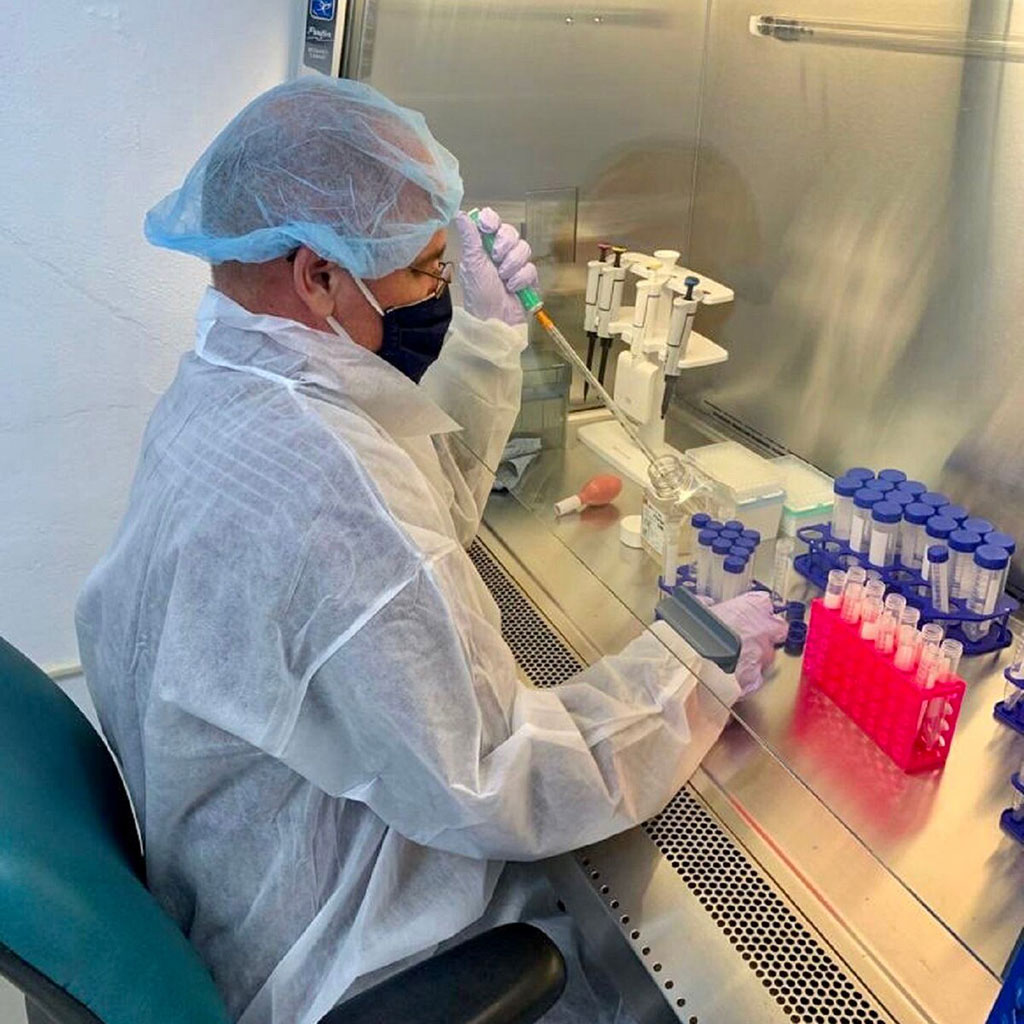GK Pharmaceuticals Accu-Right SARS-CoV-2 RT-PCR Kit Granted FDA Emergency Use Authorization
By LabMedica International staff writers
Posted on 23 Sep 2020
GK Pharmaceuticals CMO (Manatí, Puerto Rico, USA) has been granted Emergency Use Authorization (EUA) by the US Food and Drug Administration (FDA) for the company’s GK ACCU-RIGHT SARS-CoV-2 assay.Posted on 23 Sep 2020
The GK ACCU-RIGHT SARS-CoV-2 assay is an in vitro diagnostic RT-PCR test intended for the qualitative detection of nucleic acid from severe acute respiratory syndrome coronavirus 2 (SARS-CoV-2) in upper respiratory specimens (such as nasopharyngeal, oropharyngeal, midturbinate, and nasal swabs) collected from individuals suspected of COVID-19 by their healthcare provider. The assay utilizes primers and probes targeting RNA from the virus nucleocapsid phosphoprotein (N) gene of the SARS-CoV-2 coronavirus. Testing consists of nucleic acid extraction followed by RT-PCR.

Illustration
The GK ACCU-RIGHT SARS-CoV-2 RT-PCR KIT utilizes primers and probes targeting RNA from the SARS-CoV-2 coronavirus N gene. The panel is designed for specific detection of two unique regions (N1 and N2) of the SARS-CoV-2 (two primer/probe sets). The primer and probe sets are based on the US Centers for Disease Control and Prevention (US CDC) 2019-nCoV Real-Time RT-PCR Diagnostic Panel. An additional primer/probe set to detect the human RNase P gene (RP) in control samples and clinical specimens is also included in the panel. The internal control RP will serve as an endogenous nucleic acid extraction control present in all properly collected patient simples and serves as both an extraction control and an internal amplification control. All three targets are amplified in individual reactions.
RNA isolated from upper respiratory specimens is reverse transcribed to cDNA and subsequently amplified using Applied Biosystems 7500 Fast Dx Real-Time PCR Instrument with SDS software version 1.4. During the amplification process, the probe anneals to a specific target sequence located between the forward and reverse primers. During the extension phase of the PCR cycle, the 5’ nuclease activity of Taq polymerase degrades the bound probe, causing the reporter dye (FAM) to separate from the quencher dye (BHQ), generating a fluorescent signal. Fluorescence intensity is monitored at each PCR cycle by Applied Biosystems 7500 Fast Dx Real-Time PCR Instrument.
Related Links:
GK Pharmaceuticals CMO













